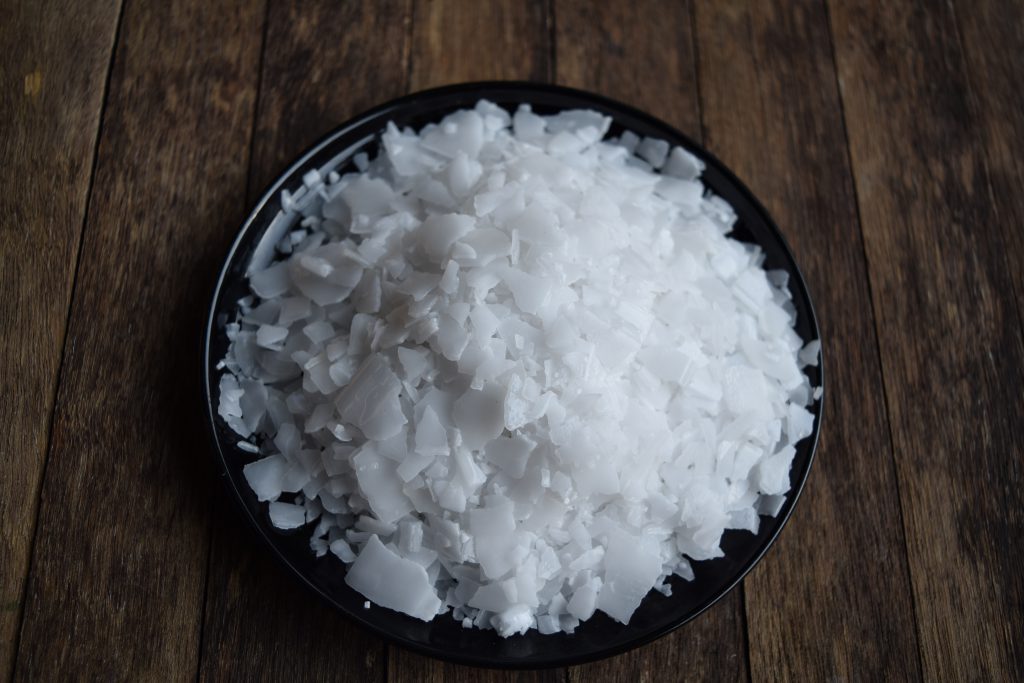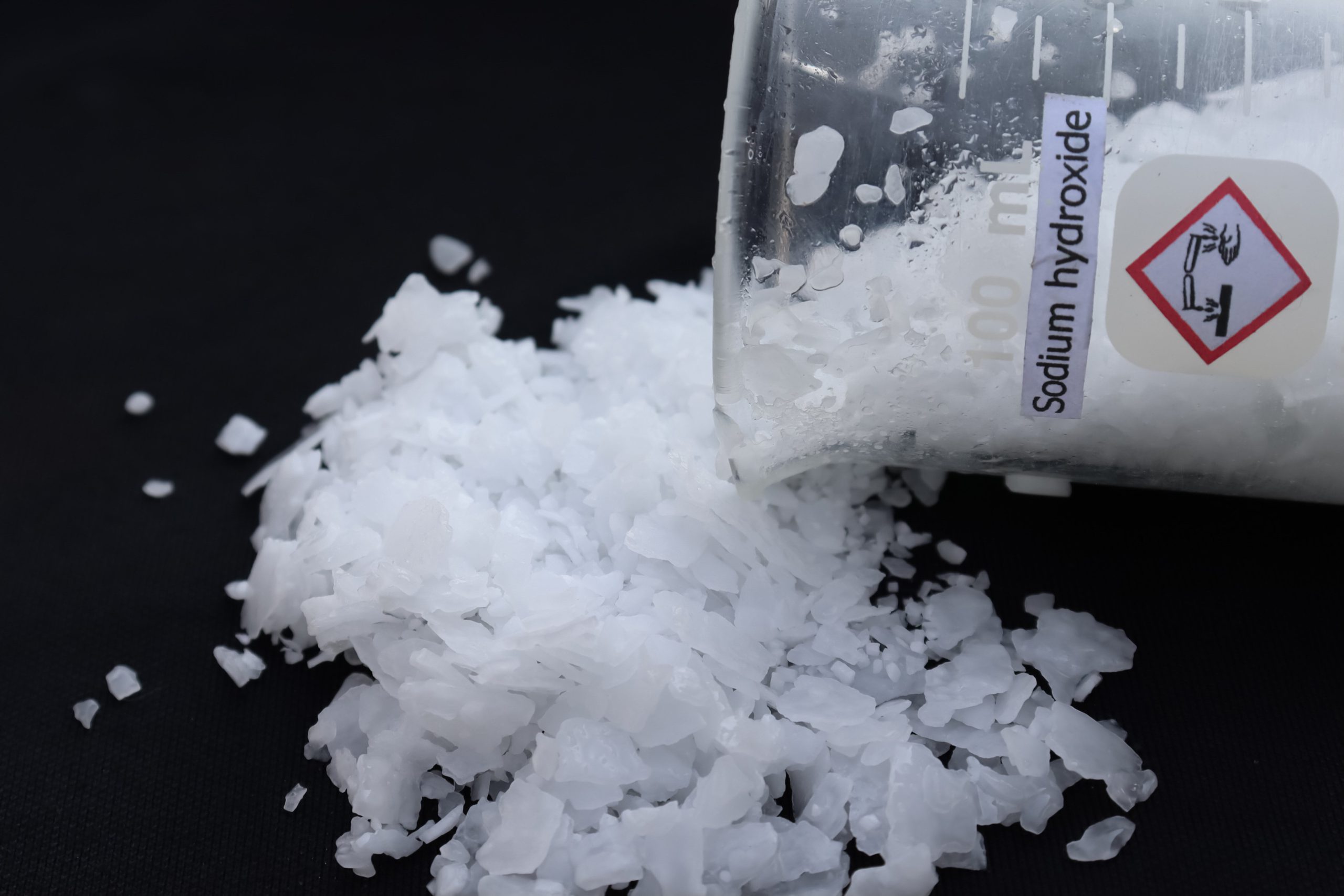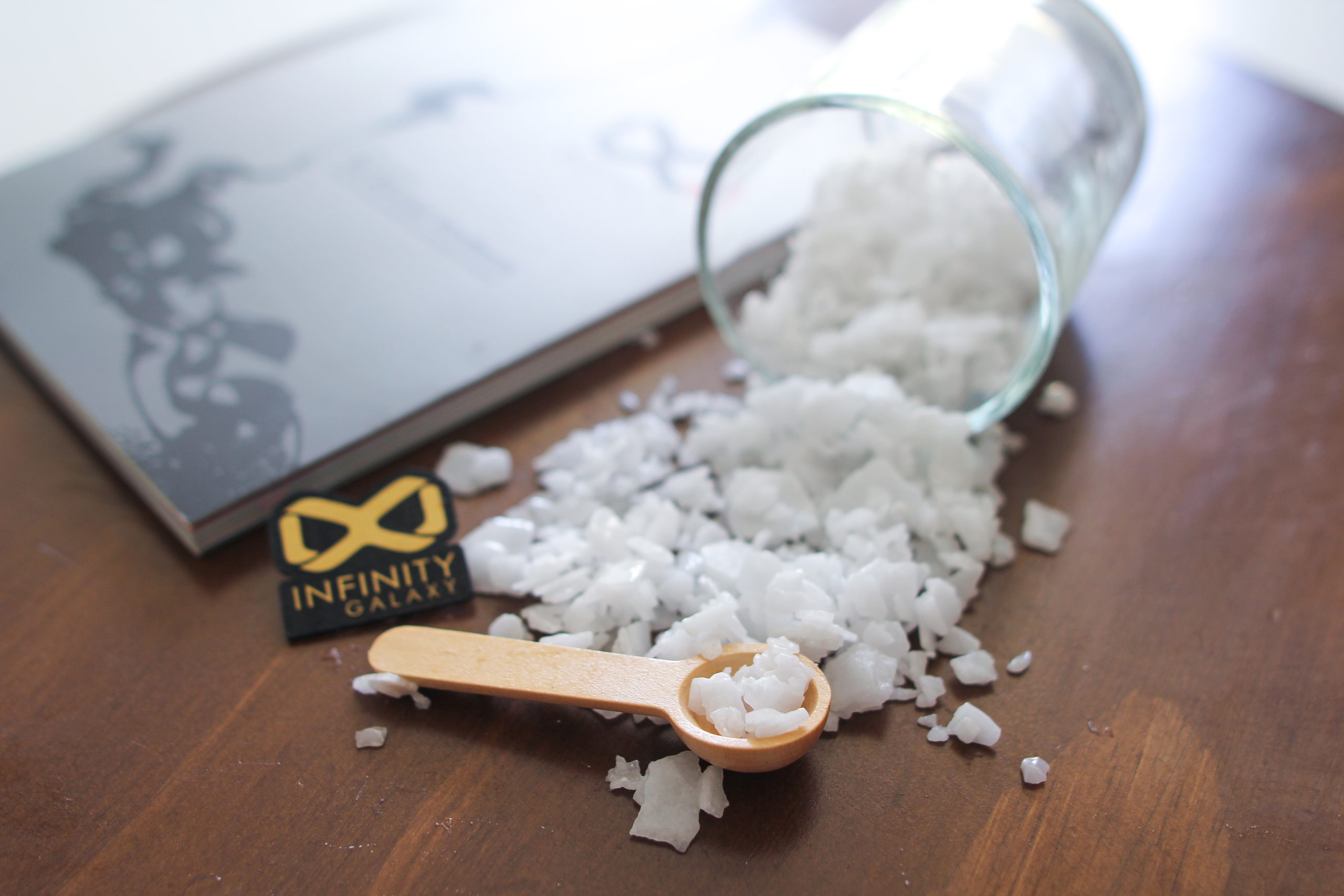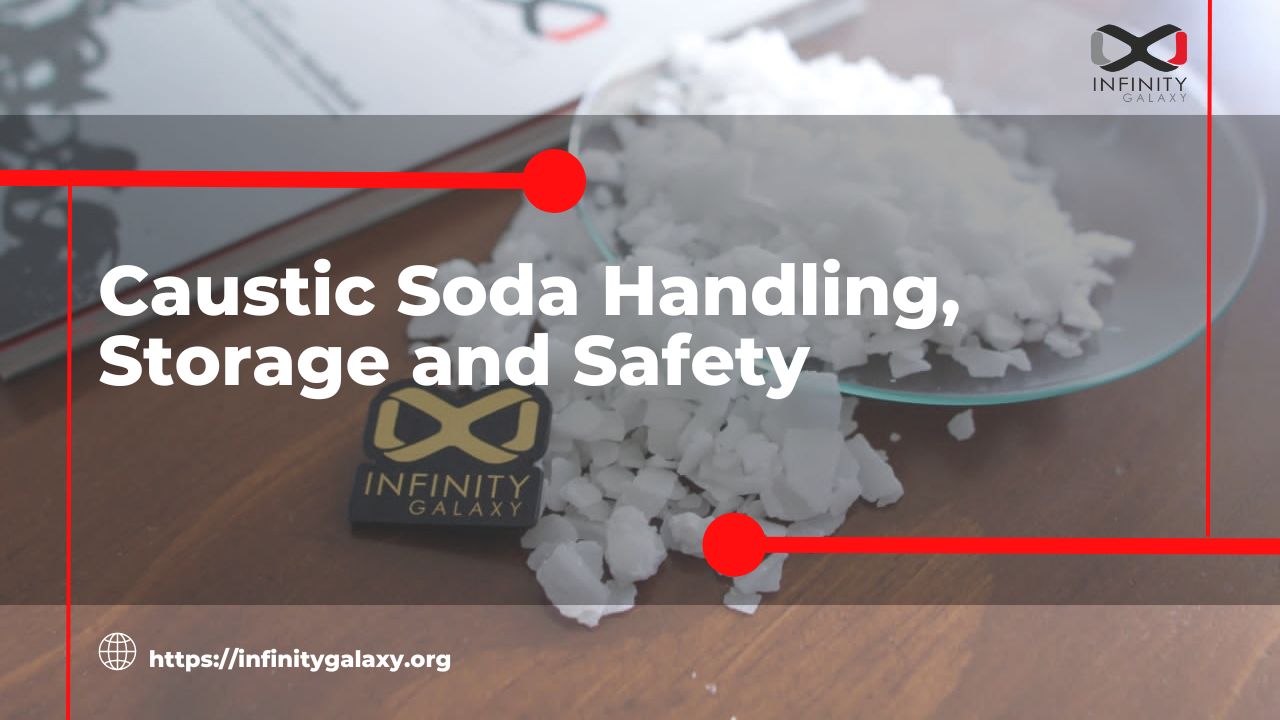Caustic soda has some physical and chemical properties that knowing them help us experience less risk when working with this material.
The caustic soda properties are key elements in understanding which type of caustic soda to use.
In the following, caustic soda’s physical and chemical properties are explained further.
Physical Properties
These properties are often known as observable properties, such as dimensions, length, weight, etc.
In this section, we talk about some of the physical properties of caustic soda.
State
At room temperature and pressure ( 25 ° C and 1 atm), caustic soda is a white solid.
It exists in the form of pellets, granules, and crystalline flakes. If you have any inquiries about caustic soda flakes, click here.
In liquid form, it could be made by solving solid caustic soda in water, which is named lye.
Melting Point
One of the properties of caustic soda is melting point. The melting point of caustic soda is around 318 °C ( or 591 K). At this temperature, solid caustic soda would melt and turn into liquid.
Odor
Caustic soda in the solid form does not have any specific smell, but it tastes bitter, as in similar alkalines.
Density
The density of caustic soda is a function of its concentration and its temperature.
Caustic soda solution has a higher density than water, and its value increased with rising caustic soda concentration.
Caustic soda has a molar mass equal to 39.99 g/mol, and its solid types have a density around 2.13 g/cm³.
Viscosity
When we are working with lye, viscosity becomes important. A 50% concentration of caustic soda solution, has a viscosity 78 times higher than that of water, which would make it as viscous as olive oil.
Caustic soda solution(lye) viscosity depends on the temperature. This means its viscosity rises when the temperature decreases.
Altogether, viscosity plays an important role in using this material in industries.
Hydrates
Caustic soda can form different hydrates at different temperatures and concentration ranges, such as
- Monohydrate
- Dihydrate
- Trihydrate
- Tri Hemihydrate
- Trihydrates
- Pentahydrate
- Hepta hydrate
There are only two stable hydrates, and the rest could be driven from these two (Monohydrate and Tri Hemihydrate).
Making hydrates requires decreasing the temperature. The gradual decrease of the temperature causes different forms of hydrates.
Monohydrates could be formed when the temperature is below 12.5 °C. If the temperature goes beyond this number, the solution breaks into a solid monohydrate and a liquid solution.
Caustic soda which is found in the market is usually monohydrates with a density equal to 1829 kg/m3.
Solubility
Caustic soda is highly soluble in water, and its solution is a function of temperature, which increases as the temperature increases. When caustic soda is dissolved in water, it releases OH- and Na+, which results in a strong alkaline solution.
Solution of this chemical component in water results in the generation of a significant amount of heat. After the heat is liberated and the reaction is settled, the resulting solution is more or less colorless and odorless.
Purity
Pure caustic soda melts at 318 °C and has a boiling point equal to 1388 °C.
In the solid form, sodium hydroxide can be made with a purity more than 98%. However, for lye, purity varies for different applications.
In cleaning oil pipelines, for example, we need concentrated lye at high temperatures since the heavy oily components are not reduced easily, so it is important to have a pure caustic soda liquid.
In other applications, such as neutralizing acids, we might use low-concentrated lye if neutralizing an acid with high pH was the goal.
A concentration rate of 30%-70% is common for lye. This value can be modified to the desired concentration by evaporating the solution or adding water.
Read the article Caustic Soda Applications in Different Industries to learn about the various uses of caustic soda.
Color
Caustic soda, in its solid state, has a white color, and it is colorless or slightly turbid in its liquid form.
When solid caustic soda absorbs water or moisture in the air, it changes color from white to a bright, low-intensity yellow.
Chemical Properties
Corrosiveness
Caustic soda is categorized as a potentially corrosive material. It can damage organic compounds such as skin, metals, and some plastics.
Working with caustic soda needs to be done with proper attention. Skin burns and eye injuries are typical problems that occur if we do not use suitable protection, such as special gloves and glasses.
Get more information about caustic soda safety for a less risky experience when handling it.
Hygroscopicity
The word “Hygroscopicity” means that caustic soda can absorb water vapor, CO2, and SO2 in the air. This property comes practical in the case of protecting materials, such as foods, against air moisture.
In hygroscopy process, caustic soda absorbs CO2. After that a reaction takes place and produced sodium carbonate (Na2CO3) and water (H2O).
Reactivity
Reaction with acidic oxides
Some reactions such as caustic soda reactions with acidic oxides help to capture harmful acidic gasses such as SO2 and H2S which are produced as a result of burning coal.
Reaction with metals
lye damages metal pumps and decreases their lifetime.
Temperature is a vital element in this case. The more the temperature, the reaction would speed up and the implemented damage would be more respectively.
Normally, iron does not react with sodium hydroxide and it only dissolves in acids. But when the temperature goes beyond 500 °C, it reacts with lye and produces Fe(OH)2, which is solid and precipitates.
Below table shows a summary of caustic soda properties :
| Caustic Soda Properties | |
|---|---|
| Physical Properties | Chemical Properties |
| State | Corrosiveness |
| Melting Point | Reactivity |
| Odor | Hygroscopicity |
| Density | |
| Viscosity | |
| Hydrates | |
| Solubility | |
| Purity | |
| Color | |
If you found this article useful and you needed more information, please feel free to ask your questions in the comments section.





